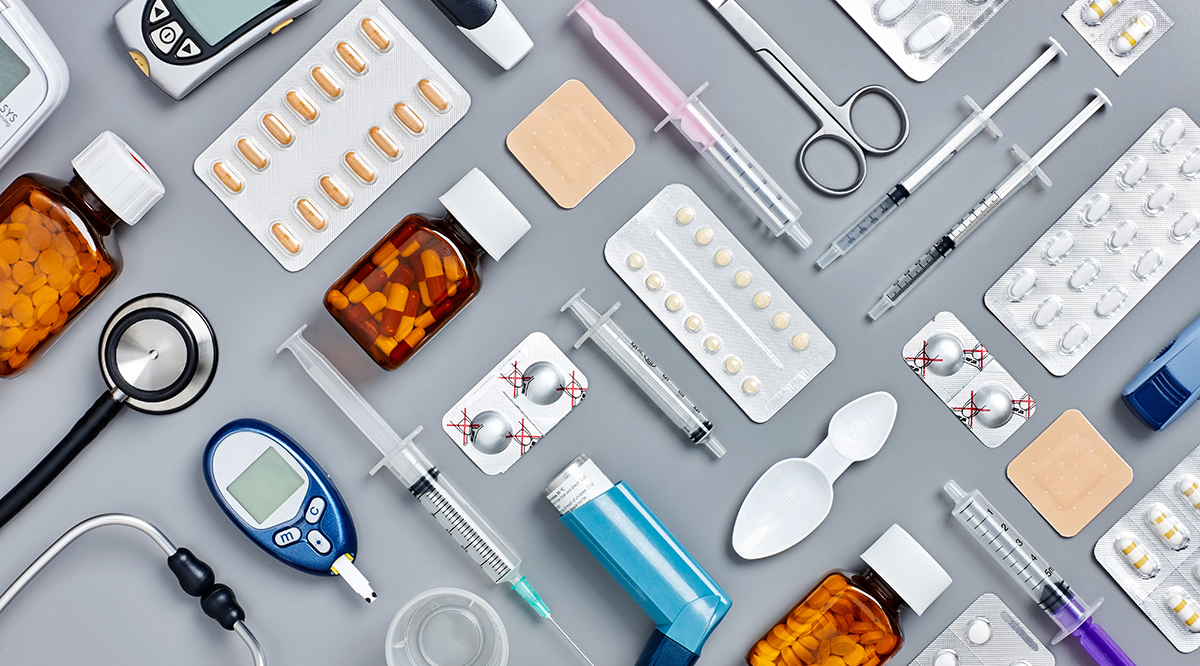FDA Warns of Growing Medical Supply Short
Imagine reaching for your hearing aid batteries or inhaler—only to find the shelves empty. These aren’t distant hypotheticals. According to a January 2025 statement from the FDA, shortages of critical medical supplies—especially those used by older adults and people with chronic health conditions—are already happening.
We’re not talking about food, camping gear, or toilet paper. This is about everyday essentials you need to stay healthy, safe, and comfortable—items often ignored in traditional emergency prep lists. Many rely on foreign manufacturing, complex sterilization processes, or semiconductor chips. Once they’re gone, they’re hard to replace quickly.
If you’re 60+, living with a health condition, or supporting aging family members, here are 11 essentials to stock up on now—not for price reasons, but because they may simply vanish from supply.
1.
Hearing Aid Batteries
These small zinc-air batteries (sizes 10, 13, 312, 675) are lifelines for millions. They last 3–14 days but can become hard to find if imports slow.
Stock Tip: Keep a 6–12 month supply in a cool, dry place.
2.
Inhalers & Nebulizer Supplies
For those with asthma, COPD, or post-COVID issues, this is critical. Nebulizer masks, tubing, and saline vials often go overlooked.
Stock Tip: Ask your doctor for a 90-day prescription refill and buy spare nebulizer accessories.
3.
Contact Lens Solution & Eye Drops
With past recalls and contamination concerns, these sterile liquids are easily disrupted.
Stock Tip: Store a 6–12 month supply of your preferred brand and dry-eye relief drops.
4.
Sterile Medical Supplies
Syringes, catheters, wound care kits—these depend on ethylene oxide sterilization, which is under environmental scrutiny and shortage risk.
Stock Tip: Keep 3–6 months of chronic-use items on hand in sealed containers.
5.
Feminine Hygiene & Incontinence Products
The 2022 tampon shortage showed how fragile supply can be. These products aren’t easily substituted.
Stock Tip: Stock a 6–12 month supply of your preferred brand, and consider backup options.
6.
Batteries for Medical Devices
From insulin pumps to oxygen concentrators, these often use AA, AAA, or custom batteries.
Stock Tip: Buy a 6–12 month supply and consider a solar charger or backup battery pack.
7.
Home Diagnostic Tools
Pulse oximeters, thermometers, and blood pressure monitors flew off shelves during COVID. They may again.
Stock Tip: Check your current tools. Buy new ones if outdated. Store backup batteries too.
Additional Overlooked Essentials
- Dental Care Supplies: Floss, interdental brushes, and denture adhesives are often imported. Stock extra.
- OTC Pain Patches & Heating Pads: Chronic pain products with adhesives or heating elements can be hard to replace. Keep backups.
- Baby Bottles & Nipples: Shortages of sterile feeding gear hit parents hard in 2022. Buy extras now if you care for infants.
- Pet Medications: Flea/tick preventives and insulin are part of global pharma supply chains. Don’t forget your animals.
Why It Matters Now
The FDA warns that over 80% of medical device components come from overseas. U.S. sterilization systems are strained, and there’s no mandatory shortage reporting. That means you often won’t hear about a problem until it hits your pharmacy—or doesn’t.
Unlike food or gas, these items don’t have easy substitutes. You can’t “MacGyver” an inhaler. You can’t improvise a hearing aid battery. And your blood pressure monitor doesn’t work without its AA batteries.
What To Do
- List Your Essentials: What do you use daily, weekly, or monthly? Include medical devices, hygiene products, and pet needs.
- Buy Ahead, Not in Panic: A 3–12 month supply is usually enough. Rotate items to avoid expiration.
- Store Smart: Use clear bins, label expiration dates, and keep items cool and dry.
- Advocate for Change: The FDA praised the EU’s proactive shortage alerts. Ask your lawmakers for similar policies in the U.S.
Final Thoughts
I think about my family—my mom’s inhaler, my dad’s hearing aids, my dog’s medication—and how fragile access really is. What would happen if just one of those became unavailable?
That’s why this post exists: to help you think ahead. Not to panic, but to act now, while shelves are still full.
What item would disrupt your daily life if it disappeared? Comment below or share this post with a friend. Let’s protect our households—and each other—by preparing smart.

